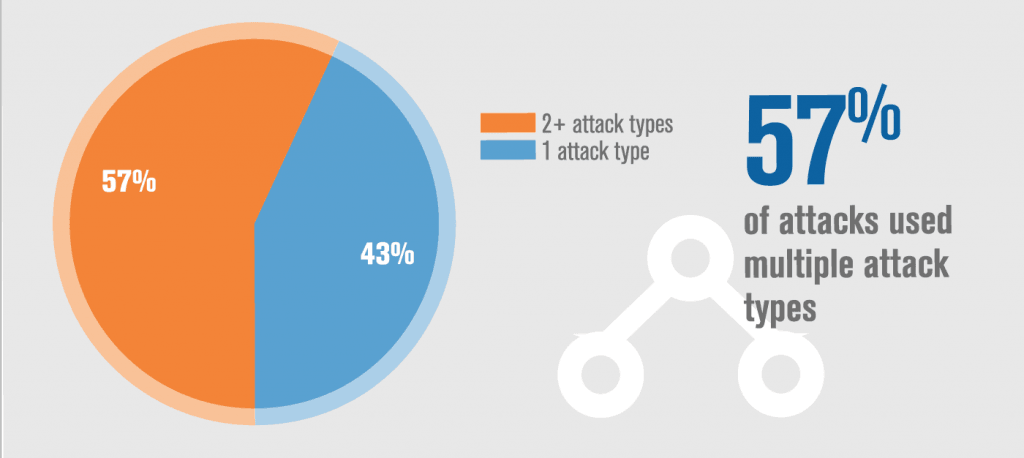
Information security company Verisign just published its Distributed Denial of Trends Report for Q1 2017. This report talks about changes in the frequency, size, and type of DDoS attack that the company has observed over the first few months of this year.
The main takeaway is this: The number of DDoS attacks has plunged by 23 percent compared to the previous quarter. That’s good! However, the average peak attack size has increased by almost 26 percent, making them vastly more potent at taking down websites and critical online infrastructure. That’s bad.
The report also notes that attacks are sophisticated in nature, and use several different attack types to take down a website. While 43 percent use just one attack vector, 25 percent use two, and six percent use five. This, obviously, makes it much more difficult to mitigate against.

Verisign’s report also talks about the largest DDoS attack observed by the company in Q1. This was a multi-vector attack that peaked at 120 Gbps, and with a throughput of 90 Mpps. Per the report:
This attack sent a flood of traffic to the targeted network in excess of 60 Gbps for more than 15 hours. The attackers were very persistent in their attempts to disrupt the victim’s network by sending attack traffic on a daily basis for over two weeks. The attack consisted primarily of TCP SYN and TCP RST floods of varying packet sizes and employed one of the signatures associated with the Mirai IoT botnet. The event also included UDP floods and IP fragments which increased the volume of the attack.
So, in short. The attackers were using several different attack types, and they were able to sustain the attack over a long period of time. This shows the attacker has resources, either to create or rent a botnet of that size, and to sustain an attack over two weeks.
The fact that DDoS attacks have increased in potency is hardly a surprise. They’ve been getting bigger and bigger, as bad actors figure out they can easily rope insecure Internet of Things (IoT) devices into their botnets. The Mirai botnet, for example, which took down Dyn last year, and with it much of the Internet, consisted of hundreds of thousands of insecure IoT products.
The main thing you can gleam from the Verisign report is that DDoS attacks are increasingly professional, for lack of a better word. It’s not 2005 anymore. We’ve moved past the halcyon days of teenagers taking down sites with copies of LOIC they’d downloaded off Rapidshare. Now, it’s more potent. More commoditized. And the people operating them aren’t doing it for shits and giggles. They mean business.
Get the TNW newsletter
Get the most important tech news in your inbox each week.





